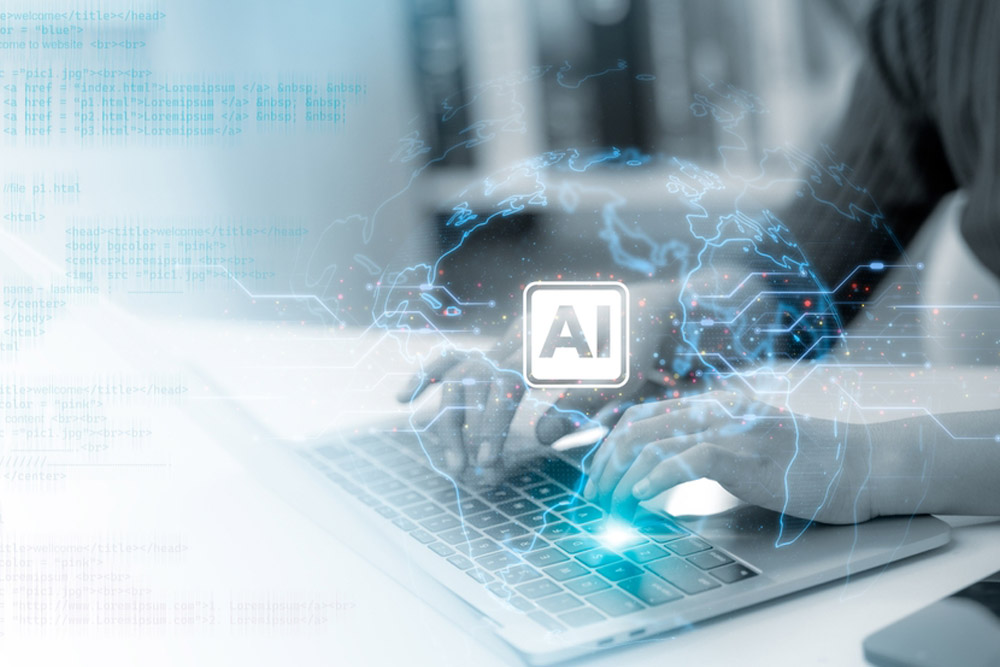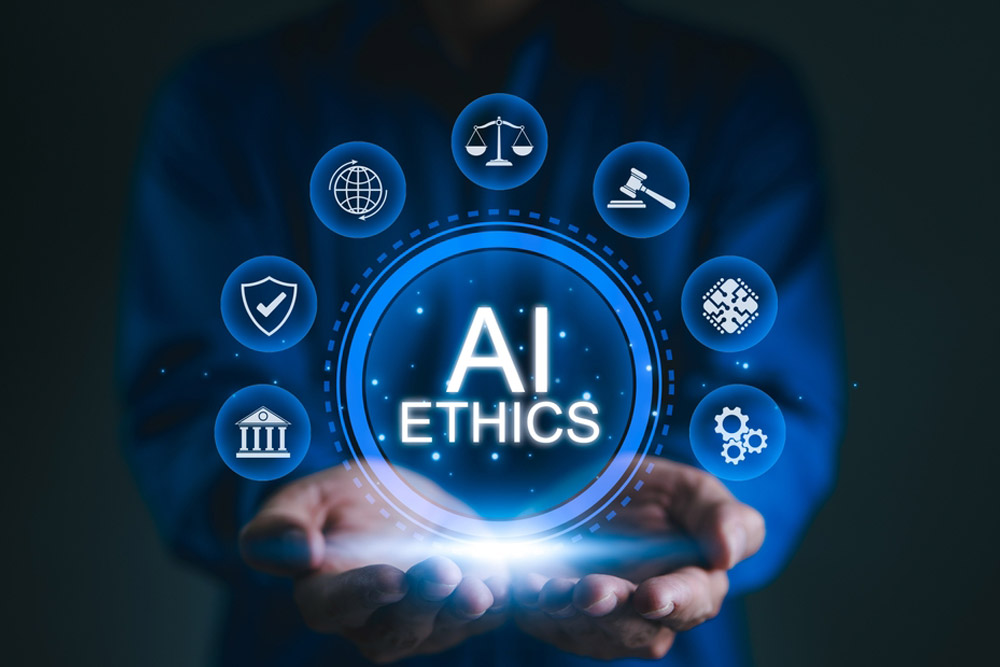
How Does AI Help Automate Content Distribution?

In the modern digital marketing landscape, content is no longer just king—it’s the kingdom. But even the best content is useless if it doesn’t reach the right people at the right time, in the right format, and on the right platform. This is where content distribution comes in—and increasingly, this is where artificial intelligence (AI) takes the lead.
For businesses and marketers, manually managing the distribution of content across dozens of platforms, tailoring it to individual audience segments, and tracking engagement metrics can be overwhelming and inefficient. Enter AI: a powerful force that is reshaping how we approach content distribution, making it faster, smarter, and more strategic.
We’ll dive deep into how AI helps automate content distribution, optimize targeting, enhance personalization, and drive better ROI—especially when used within a long-term behavioral marketing strategy like we champion at Golden Seller Inc.
What Is AI in Content Distribution?
AI in content distribution refers to the use of machine learning algorithms, predictive analytics, and automation technologies to plan, schedule, tailor, and deliver content to specific audiences across digital channels. This doesn’t just mean pushing blog posts to social media—it includes real-time decision-making about:
- Which content to show
- To whom
- On which channel
- At what time
- In what format
- With what tone or call to action
From email marketing to programmatic advertising, AI turns content into a dynamic tool that adapts to user behavior, engagement patterns, and real-time data.
The Traditional vs. AI-Powered Approach
Traditionally, content distribution required human input for every step—marketers would create posts, schedule them for different platforms, adjust tone or imagery based on broad audience personas, and then monitor performance manually. This process, while doable, is time-consuming and prone to human bias or oversight.
With AI, the process becomes more fluid. Algorithms analyze past performance, learn from audience interactions, predict future behavior, and even suggest or create variations of the content. The result is a system that continuously optimizes itself.
1. Audience Segmentation & Personalization
One of AI’s most powerful capabilities is its ability to segment audiences beyond simple demographics.
Rather than just segmenting by age or location, AI can identify micro-patterns in user behavior:
- What content topics does a user engage with most?
- How do they interact on different platforms?
- What times are they most active?
- Which call-to-action gets their attention?
With this data, AI systems can automatically personalize content distribution so that a blog post might be delivered as:
- A short-form Instagram Reel for one group
- A deep-dive newsletter for another
- A tweet thread for thought leaders
- A LinkedIn article for B2B professionals
This kind of hyper-personalization increases click-through rates, shares, and brand trust—because people are receiving content that feels designed just for them.
2. Smart Scheduling and Timing
AI doesn’t just guess when to post; it knows based on millions of data points.
By analyzing audience activity patterns, engagement history, and platform-specific trends, AI can schedule your content to go live at the optimal time for maximum visibility. This applies to all channels—social media, email campaigns, blog publication, or even YouTube uploads.
Beyond initial scheduling, AI tools can re-distribute evergreen content periodically, adapting the messaging for fresh relevance or adjusting the medium (e.g., turning a blog post into a podcast or infographic).
This makes your content library a living, evolving asset rather than a one-and-done effort.
3. Multi-Channel Distribution at Scale
Managing cross-platform distribution is one of the biggest headaches for marketing teams. Every platform has its own formatting rules, audience behavior, and algorithm preferences.
AI tools solve this by automating content repurposing and formatting. For example:
- An AI system can extract key points from a whitepaper and format them into tweets
- It can convert blog posts into short videos for TikTok or Instagram Reels
- It can automatically adjust image dimensions or rewrite headlines for different platforms
This ensures that the message stays consistent across channels while still adapting to each platform’s nuances—boosting reach and brand consistency.
4. Predictive Content Suggestions
AI doesn’t just help distribute content—it helps decide what content to distribute in the first place.
Using predictive analytics, AI can determine what topics, formats, or tones are likely to perform well with specific audience segments based on historical engagement, search trends, competitor analysis, and seasonal patterns.
For example, if your audience engages more with listicles on Monday mornings and video tutorials on Friday afternoons, AI can build your distribution calendar accordingly—automatically.
This predictive capability ensures that your marketing efforts remain both proactive and relevant, maximizing ROI while reducing trial-and-error cycles.
5. Performance Analysis and Real-Time Optimization
Once content is published, AI continues to work behind the scenes, monitoring metrics in real-time:
- Engagement (clicks, likes, comments)
- Dwell time
- Scroll depth
- Bounce rates
- Shares and virality
- Conversion rates
Based on this data, the AI can auto-adjust your strategy. If a video post underperforms on Facebook but gains traction on LinkedIn, it can redirect budget and focus accordingly. If an email subject line has a poor open rate, it can A/B test alternatives in real time.
You’re not just tracking success—you’re responding to it, instantly.
6. Email Marketing and Dynamic Content Insertion
Email remains one of the highest-ROI marketing channels, and AI is revolutionizing how we approach it.
AI tools can tailor newsletters to each recipient, dynamically inserting content that reflects their browsing history, purchase behavior, or engagement with past emails.
This is how platforms like Amazon or Netflix build their “recommended for you” engines—but the same technology is now available to marketing firms, especially those focused on behavioral data like Golden Seller Inc.
Combined with AI-powered subject line optimization and delivery time prediction, you get smarter email campaigns with better open and conversion rates.
7. Integration with Paid Advertising
AI-based content distribution doesn’t stop at organic efforts—it powers paid media as well.
Through machine learning models, platforms like Google Ads, Meta, and programmatic DSPs can:
- Predict which content variation will perform best with which audience
- Auto-optimize bidding and placement in real time
- Personalize display ad creatives using content pulled from your distribution library
This not only saves ad spend but also increases your click-through and conversion rates by ensuring that the right creative reaches the right user at the right moment.
When paired with psychological marketing strategies, such as anchoring, scarcity, or authority bias, the effectiveness of these automated campaigns compounds exponentially.
8. Voice Search and AI-Powered Assistants
As voice search continues to rise, especially through platforms like Google Assistant, Siri, and Alexa, AI-driven content needs to be ready in conversational formats.
Content distribution tools are now optimizing snippets and structuring content specifically to rank for voice queries. This requires a different approach to SEO and format—but AI handles this automatically.
With voice-powered responses becoming part of the content distribution pipeline, brands must now ensure their material is optimized for both traditional and conversational interfaces.
9. Chatbots and Conversational Content
AI-powered chatbots are now capable of delivering personalized content in the form of conversation.
For example, a user asking a chatbot for help with marketing strategy might be served a carousel of blog posts, case studies, or video tutorials—each selected in real time based on their interaction history or lead profile.
This means content distribution is no longer passive—it becomes part of an active dialogue with potential clients or users.
10. Behavioral Feedback Loops
At Golden Seller Inc., we emphasize the psychological side of marketing—understanding how consumers think, feel, and act. AI strengthens this approach by constantly feeding data back into the system.
Every piece of distributed content becomes a behavioral data point:
- Which emotion-driven headlines generate more engagement?
- Which CTA language drives more conversions?
- Which format encourages the longest time-on-site?
AI can measure these psychological triggers and continuously refine your strategy, making each new campaign smarter than the last.
This closed feedback loop turns AI-powered distribution into a learning organism that evolves with your audience, rather than simply reacting to them.
How We Can Help
At Golden Seller Inc., we’re not just riding the AI wave—we’re helping shape it. As a top-ranked digital marketing firm in California and among the top 10 in the nation, our edge comes from integrating cutting-edge AI tools with proven psychological and behavioral marketing strategies.
We don’t just automate content distribution—we make it strategic. From hyper-personalized targeting to predictive content planning and campaign optimization, we leverage AI to deliver results that compound over time.
If you’re ready to elevate your content distribution with intelligence, precision, and insight, our team is here to help you design a scalable strategy rooted in human behavior and powered by AI. Let’s make your content work harder—and smarter—than ever before.




